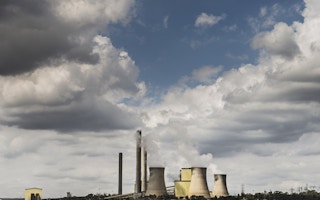Australia should stop building massive power stations as they are energy inefficient and costly structures that are “past their use-by date,” said Laurence Kemball-Cook, chief executive of Pavegen, the manufacturer of tiles that convert footsteps into renewable electricity.
Kemball-Cook noted that most large power stations are located long distances from where the energy generated is consumed, and that “significant energy is lost when it is transferred from the point of generation to the point of use.”
“Large installations are clunky, unwieldy, an a left over from a bygone generation,” he added.
Speaking ahead of the All-Energy Australia 2014 conference in Melbourne this October, where he will be delivering the keynote address, Kemball-Cook said in a statement that the future of energy generation instead lies in community-scale plants, which are one-hundredth the size of existing power stations.
He added that all new buildings can be used as power stations, as they already had the built in technology to create power.
“Building small generation, community-based power stations that can be fully integrated into the smart grid of the future will lead to less wastage, significant cost savings, reduced carbon emissions, and less dependence on fossil fuels,” Kemball-Cook said.
Kemball-Cook is regarded as one of the world’s leaders in clean technology and innovation; Pavegen, the UK-based technology firm he founded, has won numerous sustainability awards, and also featured on UK technology investor Nominet Trust’s list of 100 most promising technology inventions for social good.
His recommendations came shortly after a report by the Australian Energy Market Operator, published in July also questioned the continuing need for coal power stations, noting that Australia was experiencing a significant oversupply of power and that no new power generation was needed for the next ten years.
This surplus was due to declining demand for electricity from the grid and the increasing popularity of solar power, said the report.
Even so, new power plants are in the pipeline for Australia. Canadian company TransAlta corp announced plans to build a gas power station in Western Australia in July, and American energy giant General Electric also announced that construction on a new, privately owned power station in Australia’s Northern Territory would begin by the end of this year.

















